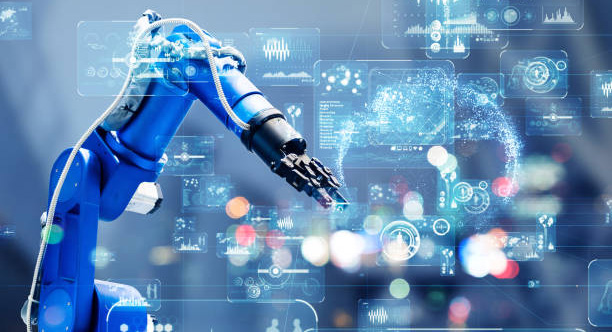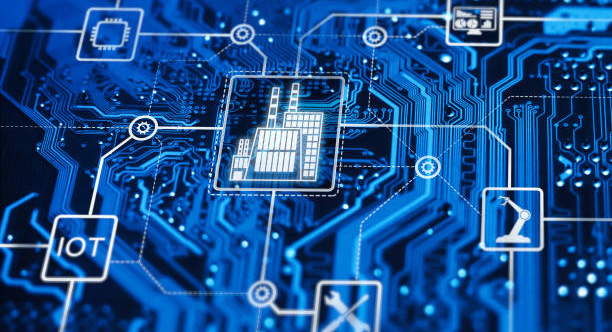The application of the Internet of Things (IoT) has penetrated into all aspects of social life, including consumer electronics, health monitoring, industrial automation/monitoring, automotive, agricultural science, smart buildings, public safety, environmental protection, etc. What is the Internet of Things? And how do electronic components work in IoT applications?

Source: Internet
How the Internet of Things Works?
The Internet of Things is the technology that connects electronic devices to the Internet. It refers to a huge network formed by combining various information sensing devices, such as radio frequency identification (RFID) devices, infrared sensors, global positioning systems, laser scanners, and other devices with the Internet. It allows the use of interconnected devices and systems to collect, transmit, and process collected data without any significant human intervention.
The main industries involved in the Internet of Things include electronics, software, and communications industries. Perceive and identify relevant information through electronic product identification, conduct and transmit information through communication equipment and services, and finally process and store information through computers.

Source: Internet
Typical IoT technology device working principles include:
1. IoT devices first use sensors to capture real-world data, including light, temperature, humidity, speed and motion, etc., and convert them into electrical signals.
2. The sensor data is transmitted to the microprocessor in the device for further data processing.
3. Refined information can be fed back to the cloud through wireless communication technologies such as Bluetooth and WiFi.
4. The received data is stored in the cloud and further processed to gain deeper insights and generate actionable results.
5. The results are sent back to the IoT device so that it can perform the required tasks, alert people, or communicate with other devices
Electronic components can complete the above steps in seconds to achieve efficient operation.
The Role of Electronic Components in IoT Devices
IoT devices require different electronic components to complete corresponding tasks, the most common of which are sensors, microcontrollers, power management, etc.
Sensor
Sensors are crucial in IoT embedded system design. The main job of the sensor is to detect changes in the surrounding environment and collect data, converting it into electrical signals.
Including temperature sensors (thermocouples, thermistors, resistance temperature detectors (RTD)), pressure sensors (tire pressure monitoring systems (TPMS), BMP180), motion sensors (passive infrared (PIR), ultrasonic), proximity sensors (ultrasonic, photoelectric, capacitive, inductive sensors), accelerometer sensors (Hall effect accelerometer, capacitive accelerometer), humidity sensor (smart thermostat).
Microcontroller
In IoT devices, the electronic component that provides processing power, intelligence, input/output peripherals, and memory is the microcontrollers. It acts as the brain of the device.
The data collected by the sensor needs to be analyzed and processed by the microcontroller to convert it into meaningful information and trigger specified responses, such as starting, turning on lights, sending notifications, etc. It can also send sensor data in real-time to the cloud or other connected devices for monitoring or remote control. In addition to processing data, microcontrollers manage communication modules, control connected devices, respond to user interface requests, and perform similar activities.
Communication Module
The communication module provides a path for IoT devices to communicate and exchange data with external systems, enabling IoT devices to connect to the Internet, share sensor data in the cloud, receive data from the cloud or other devices and achieve real-time monitoring.
Different IoT devices require different communication modules, including WiFi modules, Bluetooth modules, cellular modules, RFID modules, etc.
Power Management Components
Power management components are mainly responsible for regulating, distributing, and optimizing power supply in IoT devices. Other features include optimizing energy consumption, enabling sleep and wake modes, dynamically adjusting voltage, and similar other features.
Storage Components
Storage components include EEPROM, NAND FLASH, eMMC, etc., which mainly provide storage space for IoT devices to store operating system data, user settings, firmware, activity logs, etc. Data can be retained and managed even during power outages.
Interface Component
Interface components are used in IoT devices to obtain user input and display different types of information, which can help users easily interact, monitor, and control IoT devices.
Commonly used interface components include touch screens, OLED displays, LED indicators, biometric sensors, microphones, buttons, etc. These components make IoT devices easy to use and improve user experience.
Actuator
Unlike sensors, the role of an actuator is to take a digital signal from a microcontroller and perform the required physical action. Assume that the lights are automatically turned on when someone passes by in the corridor. When the proximity sensor detects the presence of someone, it will convert this information into an electrical signal and send it to the microcontroller for analysis and processing, and then execute the instruction to turn on the LED.
IoT devices are growing at an alarming rate, and the role of electronic components will become increasingly complex. This will also drive continuous innovation in electronic components, making future IoT devices more efficient and smarter.